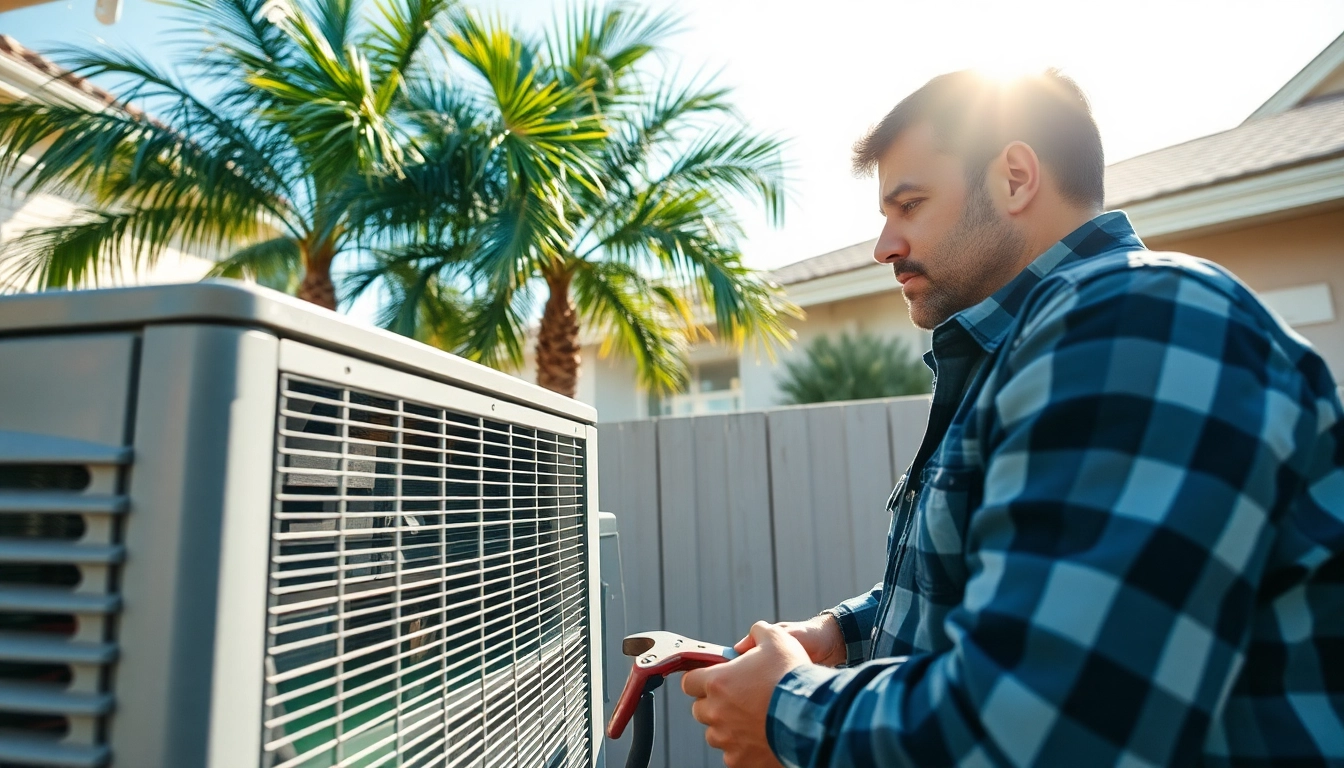Understanding Common AC Issues in Mesa AZ
Air conditioning systems are essential for keeping homes comfortable, especially in a climate like Mesa, AZ, where temperatures can soar. However, just like any other mechanical system, air conditioners can develop problems that require attention. This comprehensive guide details the common issues residents face with their air conditioning units and provides insights into effective solutions. Most importantly, when problems arise, it is crucial to find reliable ac repair mesa az services that can restore your system to optimal performance.
Signs Your AC Needs Repair
Recognizing that your air conditioning system is underperforming can save you from more significant damage and costly repairs down the line. Here are critical signs that indicate your AC may need repair:
- Warm Air Blowing: If your air conditioner is blowing warm air, it could indicate a malfunctioning compressor or a refrigerant leak.
- Unusual Noises: Sounds such as grinding, squealing, or banging can signify internal damage or misalignment in the system that require immediate attention.
- Increased Energy Bills: A sudden spike in your energy bill without increased usage can indicate that your system is working inefficiently, perhaps due to a mechanical problem.
- Weak Airflow: If you notice that the airflow from your AC vents is weak, it may be due to clogged filters, blocked ducts, or issues with the blower fan.
- Unpleasant Odors: Musty or burnt smells coming from your air conditioner indicate potential mold buildup or electrical issues that must be addressed promptly.
Common Problems Found in Air Conditioners
While the signs listed earlier may indicate a need for repairs, they can be attributed to several common problems:
- Refrigerant Leaks: A lack of refrigerant can hinder your AC’s ability to cool the air, leading to inefficient operation or complete failure. Finding and sealing the leaks and restoring the correct coolant levels is essential.
- Faulty Thermostat: If the thermostat is malfunctioning, the unit may not turn on or off at the correct times, leading to temperature inconsistencies.
- Clogged Filters: Filters that are dirty or clogged restrict airflow, making your system work harder and potentially leading to system failure. Regularly replacing or cleaning air filters can prevent this issue.
- Drainage Problems: Air conditioners remove moisture from the air as part of their cooling process. If the drain line backs up, it can cause water damage and increased humidity levels in your home.
- Electrical Issues: Problems with electrical components like capacitors, contactors, and wiring can also prevent the unit from functioning effectively.
Specific Challenges in Mesa’s Climate
The climate in Mesa, AZ, presents unique challenges that can affect the performance of air conditioning systems:
- High Temperatures: With summer temperatures frequently exceeding 100°F, air conditioning systems must work harder to maintain comfortable indoor environments. This added strain can increase wear and tear.
- Dust and Allergens: The dry desert environment can lead to more dust accumulation in AC filters and ducts, causing buildup that restricts airflow and can lead to inefficiencies.
- Humidity Levels: Although summer is typically dry, occasional monsoon storms can raise humidity levels, putting additional strain on your AC as it manages both temperature and moisture.
Preparing for AC Repair Mesa AZ
When it’s clear that your AC needs repairs, careful preparation can ensure that the process goes smoothly. Here are steps to take before calling a technician:
What to Check Before Calling a Technician
Before reaching out for professional assistance, perform a basic assessment of your air conditioning system:
- Inspect Your Thermostat: Ensure that it is set to “cool” and that the batteries are functional if it’s a digital model.
- Check Power Supply: Make sure your AC is connected to power and that circuit breakers haven’t tripped.
- Examine Air Filters: If the filters are dirty, replace them; a blocked air filter can cause various performance issues.
- Look for Obvious Signs of Damage: Examine the outdoor unit for any visible damage, debris, or blockages that may affect its operation.
How to Choose the Right Repair Service
Selecting a qualified technician is crucial for effective repairs. Here are tips to help you choose the right AC repair service:
- Check Credentials: Look for licensed and insured professionals. Certifications from accredited organizations indicate that technicians are trained and qualified.
- Read Reviews: Research customer reviews and testimonials to get a sense of the company’s reputation and reliability.
- Get Multiple Estimates: Contact multiple technicians for estimates. This allows you to compare prices and services to find the best option.
- Ask About Guarantees: A reputable repair service should offer warranties on parts and labor, ensuring that you are protected in case of future issues.
Understanding Service Costs and Estimates
The cost of AC repair can vary based on the extent of the damage, parts needed, and labor involved. Here are some factors that influence pricing:
- Type of Repair Needed: Basic repairs may be less costly, while more extensive issues like compressor replacement can significantly raise the overall price.
- Replacement Parts: The cost of parts can vary widely depending on the make and model of your air conditioning unit.
- Labor Costs: Service call fees and hourly rates can differ among technicians, so it’s good to clarify these costs upfront.
- Time of Year: Peak seasons may lead to higher prices due to increased demand for services.
What to Expect During an AC Repair Service
Knowing what to expect during your AC repair can alleviate concerns and clarify the process:
Typical Steps in the Repair Process
A professional repair visit generally involves specific steps:
- Assessment: The technician will first assess the unit and diagnose the problem.
- Estimate: After diagnosing the issue, the technician will provide an estimate for the necessary repairs.
- Approval: Once you approve the estimate, the technician will proceed with the repairs.
- Repair Work: The technician will perform the necessary repairs, which may involve replacing parts, cleaning components, or addressing electrical issues.
- Testing: After repairs are made, the technician will test the system to ensure it is functioning correctly before leaving.
Essential Tools Used by Professionals
Technicians use various tools to diagnose and repair AC systems effectively. Here are some essential tools:
- Multimeter: Used to test electrical components and identify any faults.
- Refrigerant Gauges: Instrumentation to measure refrigerant levels within the AC unit.
- Screwdrivers and Wrenches: Essential for removing and replacing covers or parts of the unit.
- Vacuum Pump: Used to remove moisture and air from the refrigerant system during repairs.
- Leak Detectors: Tools that help in finding refrigerant leaks in the system.
Timeframe for Common Repair Jobs
The time taken for AC repairs can vary based on the complexity of the issue. Here are general timeframes for common repair jobs:
- Filter Replacement: Typically around 15-30 minutes.
- Thermostat Replacement: Usually takes about 30-60 minutes.
- Refrigerant Recharge: About 1-2 hours, depending on the leak’s severity.
- Compressor Replacement: May take several hours (3-5) depending on accessibility and model type.
Post-Repair Tips for Maintaining Your AC
Once your air conditioning system has been repaired, implementing maintenance strategies can prolong its lifespan and keep it functioning efficiently:
Best Practices for Air Conditioner Maintenance
Adhering to routine maintenance can help avoid future problems and costly repairs:
- Regular Filter Changes: Change or clean filters every 1-3 months to ensure proper airflow and efficiency.
- Routine Inspections: Schedule annual inspections to catch possible issues early. A professional can clean and service your system thoroughly.
- Clear Surroundings: Keep the outdoor unit free of debris, foliage, and dirt to ensure unobstructed airflow.
- Monitor Performance: Keep an eye on your system’s performance, and if you notice any changes, seek professional help promptly.
Seasonal Maintenance Checklists
Creating a seasonal checklist can help keep your AC in top shape:
In Spring:
- Clean the outdoor unit.
- Inspect the refrigerant levels and check for leaks.
- Replace air filters.
In Summer:
- Monitor energy bills for unusual spikes.
- Check ventilation and airflow in your home.
In Fall:
- Schedule a pre-winter inspection.
- Clean and cover the outdoor unit.
In Winter:
- Inspect the thermostat settings.
- Keep the indoor air circulating by using fans to distribute heat evenly.
Signs Your AC is Operating Efficiently
Recognizing that your air conditioner is functioning optimally ensures a comfortable home and energy savings:
- Consistent Cooling: The unit effectively maintains a consistent and comfortable temperature throughout your home.
- Low Energy Bills: Efficient operation leads to reasonable energy bills compared to previous years.
- Minimal Noise: A well-functioning system operates quietly, with no unusual sounds.
- Clean Filters: Regular maintenance keeps filters clean and supports optimal performance.
Emergency AC Repair Mesa AZ
In the event of a significant malfunction, knowing when to call for emergency services can save you time and prevent further damage:
When to Call for Immediate Assistance
If you experience any of the following situations, prompt action is essential:
- Complete Shutdown: If your unit stops working entirely, it could be a critical issue requiring immediate expertise.
- Frequent Cycling: If your AC frequently turns on and off, it could signal a problem that needs to be fixed.
- Water Leaks: If you notice water pooling around the unit, this might indicate clogged drains or other problems that need urgent attention.
- Foul Odors: Any strange smells could be an indication of electrical issues or mold growth and should be taken seriously.
Identifying a HVAC Emergency
An HVAC emergency can stem from factors related to safety and system functionality. Here’s what to consider:
- If you smell gas or notice coolant leaks, it’s critical to address these matters immediately.
- Electrical issues, like tripped breakers, that persist indicate a need for professional intervention.
- Extreme heat or humidity is making your space unsafe for living.
How to Prepare for an Emergency Repair Visit
Taking the right steps before the technician arrives can streamline the repair process:
- Document Issues: Clearly note the problems you’ve observed, including any unique sounds, smells, or operational details.
- Clear Access: Ensure that the technician can easily access the indoor and outdoor units, removing any obstacles that might hinder their work.
- Keep Communication Open: Be prepared to discuss the symptoms and history of your AC system with the technician upon arrival.


